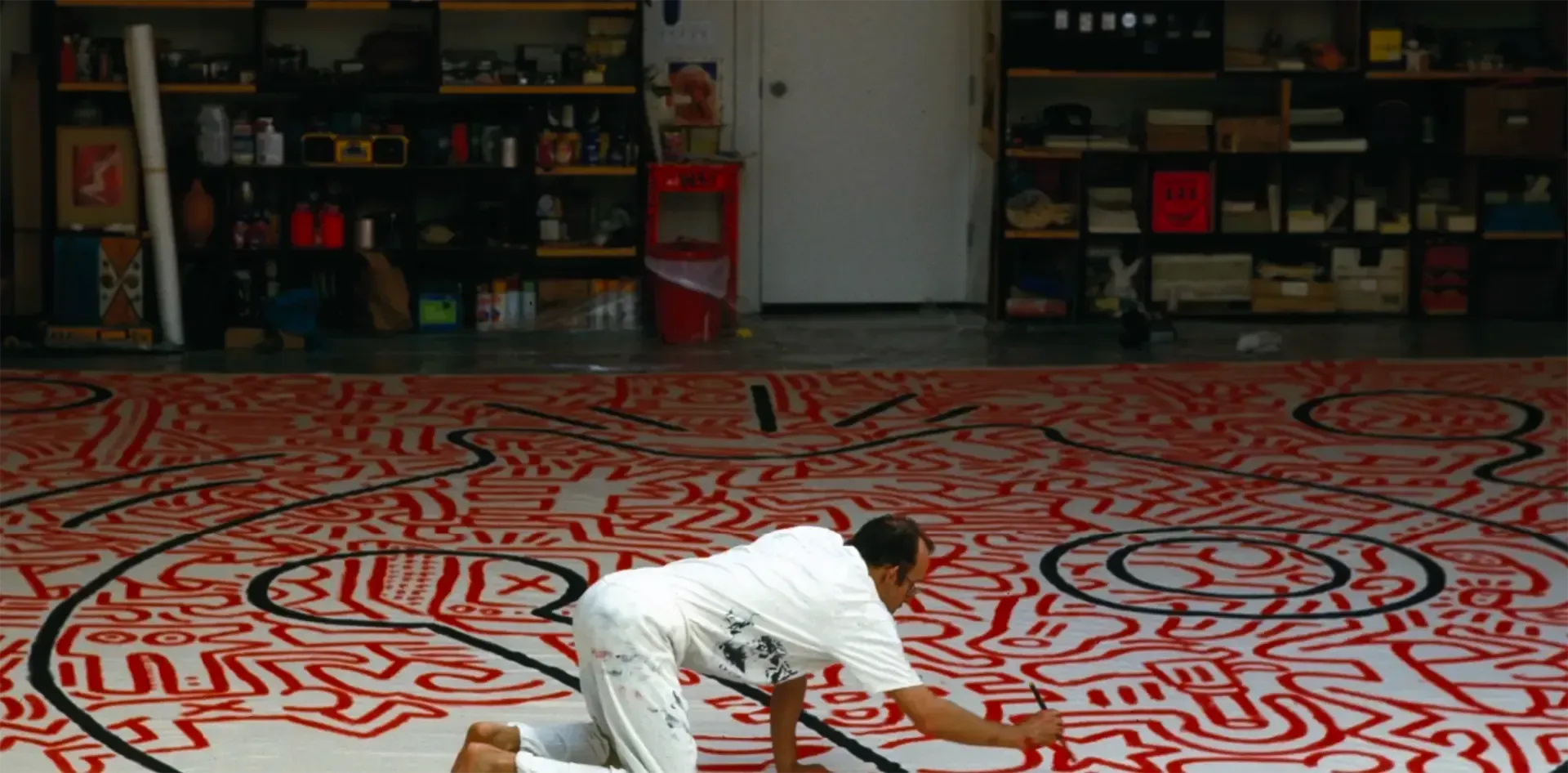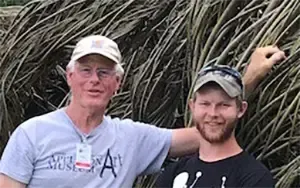Curing Cancer One Masterpiece at a Time!™
Visiting Haring's Studio
Years after Keith Haring's heartbreaking early passing, destiny gifted an audience in the late visionary's creative refuge - his preserved Broadway studio splashed still with possibilities. NYC's restless rhythms pulsed on just beyond those paint-flecked walls and floors. Yet inside 676 Broadway, a stillness settled, as if the space yearned to channel Haring's presence again.
My partner Janet McKean and I walked to the Foundation's offices through an untouched section of Haring's paint-splattered studio. We toured the workspace-turned-office quietly overcome. Without cameras to catch moments before they slipped away forever (this was before cell phones), I absorbed every detail - mind reeling at the masterpieces these walls and floors witnessed.
Representatives from the Foundation shared stories of Haring's passion, activism, and desire to make art accessible. The Haring Foundation team was meeting with our company to sell the artists' Pop Shop products to museum stores worldwide. But amid those business talks, I spent time alone in the studio's quiet spirituality. I am trying to remember if Janet did a deal with Haring's Foundation because I left the company to become a Director of E-commerce not long after this trip to New York.
All these years later, I can still close my eyes and trace mental snapshots of that paint-starred studio suspended in time. I glimpsed imagination's power to transcend earthly bounds within those creative crucible walls. Like all great art, haring harnessed human potential to find truth, beauty, and equity.
Haring used simple lines in intricate designs to convey complex emotions and narratives, a "graffiti" style I love. Banksy, Basquiat, Shepard Fairey, Kenny Scharf, and other graffiti artists tell complex stories with paint, drawing, words, and design. I'll never forget standing in Haring's studio, experiencing a poignant reminder of the power of art to transcend life and death, to communicate, challenge, and inspire

Interrupted River, 1987
Crack is Wack, 1986
Cancer Is Wack
Images:
- Artist at the top - Joseph Szkodzinski Keith Haring Drawing Series January 1982 © Joseph Szkodzinski 2018 www.thefoundimage.com Images
- Slider images: Interrupted River, 1987 © Keith Haring Foundation Photo by Tseng Kwong Chi , 1987 © Muna Tseng Dance Projects, Inc., New York
- Crack is Wack, 1986 © Keith Haring Foundation Photo by Tseng Kwong Chi , 1986 © Muna Tseng Dance Projects, Inc., New York
- Cancer Is Wack was created with Woodcutter's Haring font NOT Keith Haring.


